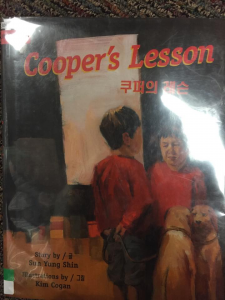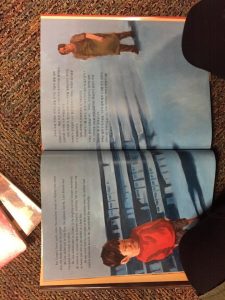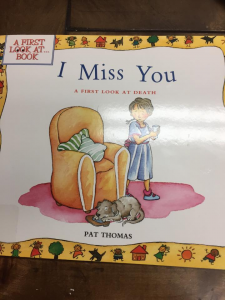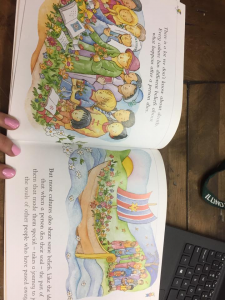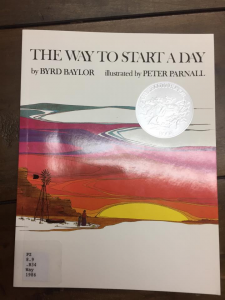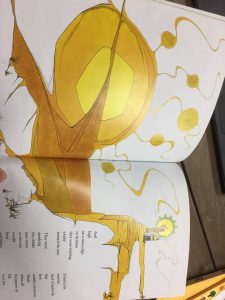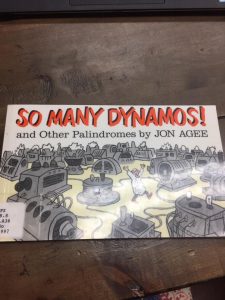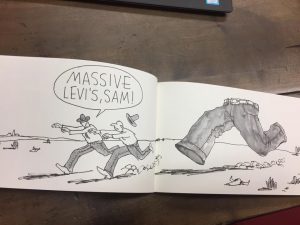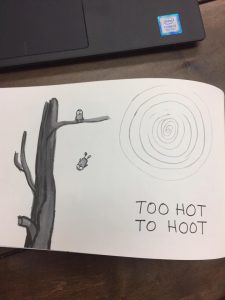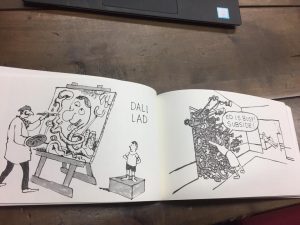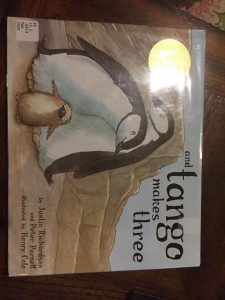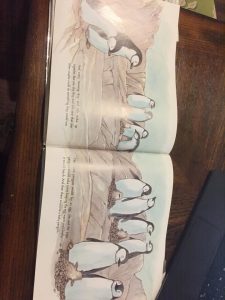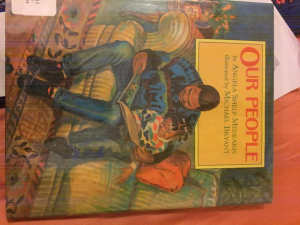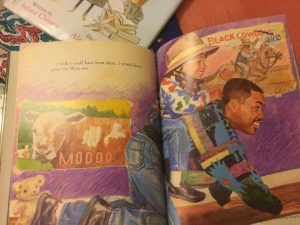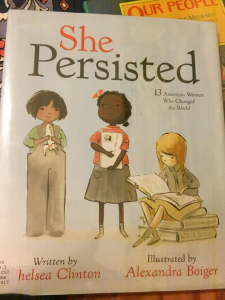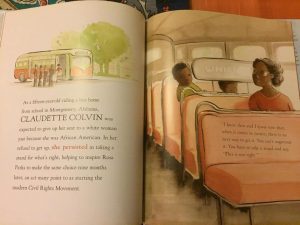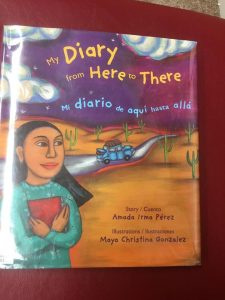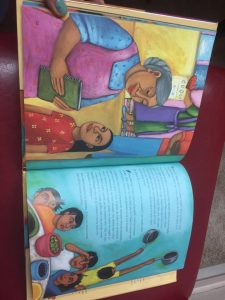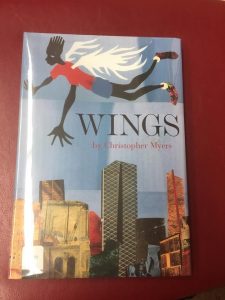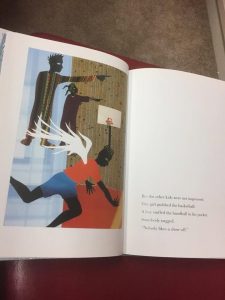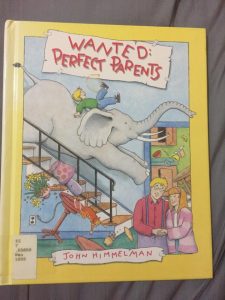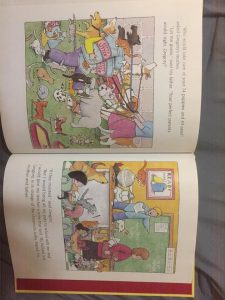Title: Cooper’s Lesson
Author: Sun Yung Shin
Illustrator: Kim Cogan
Publication/ Year: Children’s Book Press, 2004
Number of Pages: 29
Tags/ Themes: Culture, Diversity, Family, Emotion, Fiction, Friendship, Picture Book, K-5, Rebecca Cauthorn
Genre: Fiction
Descriptive Annotation: This book follows the story of Cooper, a young boy who is half Korean and half white. His mother sends him out to a store where the store owner only speaks Korean. But Cooper’s Korean is pretty poor and he gets stressed out and thinks the other people in the store are laughing at him because he is not good at speaking Korean. So he tries to steal a brush, but ends up making friends with the storekeeper. Together, he learns Korean and helps the storekeeper around the store in order to make up for trying to steal. The book is written in both Korean and English.
Classroom Application: This book would be very good to use in a classroom where some of the students spoke Korean. It would bring to light the very real struggle that students have when they have multiple racial backgrounds and struggle with identity. By being in both Korean and English, it allows the book to be more accessible to students who maybe speak just Korean, or are learning English as a Second Language. Additionally, it is a good book for English readers to read because it reveals some of the struggle that millions of people have when they are either from, or their parents are from, different parts of the world.
Linguistic and Cultural Diversity Analysis: Having the book written in both English and Korean allows the book to be accessible for people who speak either (or both!) languages. It also can help strengthen the understanding of one (or the other) language, because the reader could read both, reading the language they understand less of first, and then reading their more comfortable language second, checking for understanding. It addresses diversity issues very head-on because there are several points where the store owner tells the boy that he, too, struggled with languages and figuring out what to call himself. This identity struggle seems to be common for people who are any ethnicity other than white, and this book does a beautiful job addressing that and letting the reader know that it is normal and okay to struggle with language and sense of belonging.
Illustration:
